Garmin Vivofit Review - App, Performance, Battery Life and Verdict Review
App, Performance, Battery Life and Verdict
Garmin's first fitness tracker is good but not the best
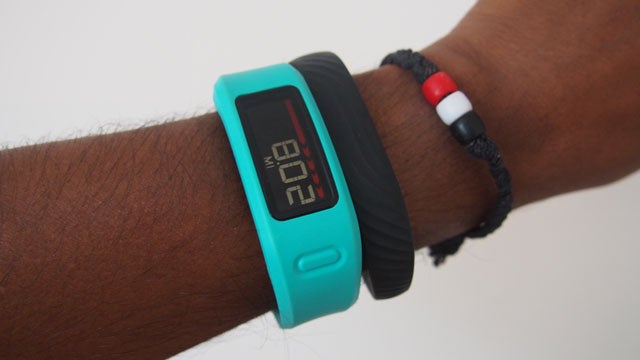
Sections
- Page 1 Garmin Vivofit Review
- Page 2 App, Performance, Battery Life and Verdict Review
Garmin Vivofit: Garmin Express and Garmin Connect app
There are two ways to sync data and that’s via the Garmin Express desktop tool or the more useful Garmin Connect smartphone app. Available on Android and iOS for free, Connect has been around for some time now and thankfully it’s been given a long overdue makeover. It’s a more rigid platform compared to Fitbit and Jawbone where the only third party support on offer is via MyFitnessPal.
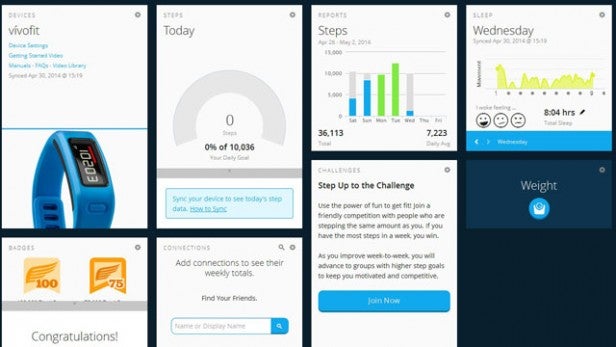
In the smartphone app you’ll need to sync and register the VivoFit before you can use it. Unless you have an existing Garmin Connect account, this involves setting up an account which requires the usual general information like height, weight and adding your usual sleep starting time and wake up time. Once in the dashboard like the Fitbit one, it let’s you add widgets so you can customize what information you want to quick glance at.
There’s a Community section where you can find challenges, a news feed and connections where you can find other Connect users. There’s also a LiveTrack feature where you can share activities in real-time to invitees. This is largely replicated on the web version where you can also see virtual badges earned, challenges and additional reports on daily, weekly and monthly progress. It’s easy enough to navigate around however it’s getting the information there in the first place that’s the real problem.
Garmin Vivofit: Performance
Before you even get the Vivofit strapped on syncing it proves problematic. It took several attempts to connect the band to a Windows 8 laptop using the ANT Plus receiver. Things don’t get much better with the smartphone app. It didn’t connect or sync once when we tried it with the Samsung Galaxy S5. We had more success pairing it with the Nexus 5 eventually. Syncing the data though often crashed the app or it regularly didn’t make it through a full sync.
As a step counter there’s some discrepancies in the data recorded but it’s generally consistent. Comparing it to the Jawbone UP24 and the Withings Pulse O2, the steps counted figure is larger than the other two fitness trackers. This could possibly be explained by the fact we didn’t have to take the Vivofit off to take a shower in the morning or after a run. The calorie count however is more than double what the Jawbone UP24 and Withings Pulse O2 suggests so there’s clearly some accuracy issues in this department.
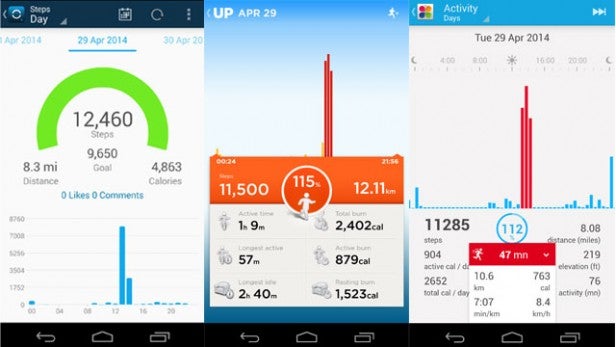
Step tracking compared: (left to right) Garmin Vivofit, Jawbone UP24 and Withings Pulse 02
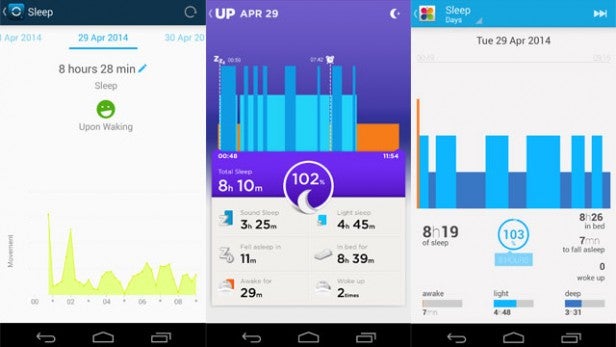
Sleep tracking compared: (left to right) Garmin Vivofit, Jawbone UP24 and Withings Pulse 02
Moving onto the sleep tracking and you can’t help thinking that like the Fuelband SE it’s all a bit superficial and not very useful. It doesn’t give you a reading of the quality of sleep instead focusing on movement during bedtime. As the data above shows, there are various recorded times for the amount of sleep and time in bed. The Jawbone UP24 and the Withings Pulse O2 provide much richer information compared to the graph provided by the Vivofit.
If there’s one thing you definitely don’t need to worry about with the Vivofit it’s battery life. There’s no dedicated charging cradle to carry round or the need to recharge via microUSB as it runs on two normal replaceable CR1632 coin cell watch batteries. This helps the Vivofit last for up to a year before needing a new set which is six months more than the watch battery-powered Fibit Zip tracker is capable of.
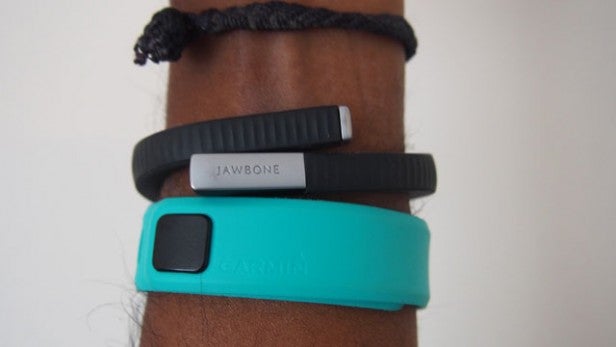
Should I buy the Garmin Vivofit?
There are two very good reasons to buy the Garmin Vivofit and that’s the display and the battery life. It means you are not constantly having to pull out your phone to check progress or worry about the Vivofit running out right before you complete your target step goal. A fitness tracker should be able to live on in the background and the Vivofit succeeds at doing that.
The lack of a backlight is really annoying but it’s a problem outweighed by the frustrating experience attempting to sync and upload data. As a fitness tracker that can motivate you to move for longer in the day, the personalised step goals are more effective than the inactivity bar in doing that and this is something other trackers currently do not offer.
For £99, it’s the same price as the Fitbit Flex and there’s not a great deal to separate the two. Both adopt the same rubbery, water-resistant design and have the same options to sync via desktop or smartphone. The Vivofit has more built-in features to motivate users and can be used with a heart rate monitor. For uploading and digesting data, the Fitbit ecosystem does a far better job and is much easier to get to grips with.
As one of the few fitness trackers with a built-in display and mammoth battery life, it’s the best option available, and that includes the Samsung Gear Fit. If you can live without the display, the Jawbone UP24 (£124) offers more insightful data and a more attractive design.
Verdict
The Garmin Vivofit is an affordable fitness tracker with great battery
life that’s a few features short of being the best to buy.
Next, read our Best Fitness Trackers roundup


